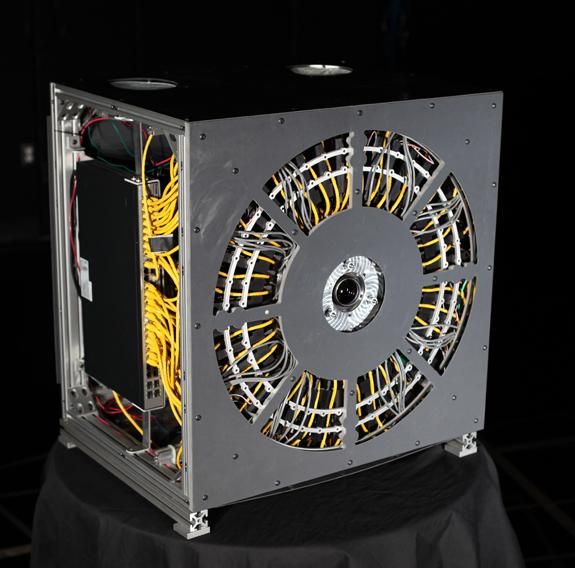Gigapixel Camera Takes 11-Foot Wide Photos in 0.01 Seconds
/https://tf-cmsv2-smithsonianmag-media.s3.amazonaws.com/filer/2012062012100206_20_Aware2_small.jpg)
Update: This story originally discussed a prototype camera capable of capturing 50 gigapixel images. Though a design has been laid out for such a camera, the existing prototype takes one gigapixel shots.
A brand new photography system uses 98 synchronized camera to capture a gigapixel photo in an instant. If this were a normal camera, a photo-quality print with regular dimensions would be around 11 feet wide. By comparison, brand new top of the line digital cameras tend to be around 20 megapixels, or 50-times smaller.
Developed by researchers David Brady, Michael Gehm, and colleagues, the camera works by using a series of honeycombed receptors to capture the light flowing through a single glass lens.

Though Gigapixel-sized photos already exist, and they are quite stunning, the existing technology can take minutes or even days to capture one photo as a robot maneuvers a regular camera to take a sequence of overlapping photos. The new camera, by contrast, is “a snapshot gigapixel imager,” says Brady.
“All of the photos are taken simultaneously and then stitched … We capture in the same time as a standard camera (0.01 to 0.1 seconds) but it currently takes 18 seconds to transfer the image to disk.” he said.
Existing gigapixel photography, with its slow capture times, has already caught on for creating beautiful, zoom-able panoramas. It’s even starting to turn up as a tool for geological research.
According to Brady,
Multi-scale gigapixel cameras will be used in the near term for security at busy venues (transit hubs, ports, military bases), for streaming event capture at sporting events, concerts and historic occasions and for environmental monitoring and display. At sporting events, for example, our cameras will enable high resolution telepresence over internet channels, enabling viewers to see the game from what ever perspective and whatever resolution they choose. Similarly, cameras mounted at wildlife refuges or scenic vistas will enable researchers and tourist to log in, automatically find features and events of interest and experience the scene in much greater detail than if they were physically present.
The photo quality of the new system isn’t really there yet, as can be seen in test pictures, but it’s likely only a matter of time before you’ll be taking gigapixel photos for your Facebook cover picture.
More from Smithsonian.com:
Winners of Nature’s Best Photography
/https://tf-cmsv2-smithsonianmag-media.s3.amazonaws.com/accounts/headshot/smartnews-colin-schultz-240.jpg)
/https://tf-cmsv2-smithsonianmag-media.s3.amazonaws.com/accounts/headshot/smartnews-colin-schultz-240.jpg)